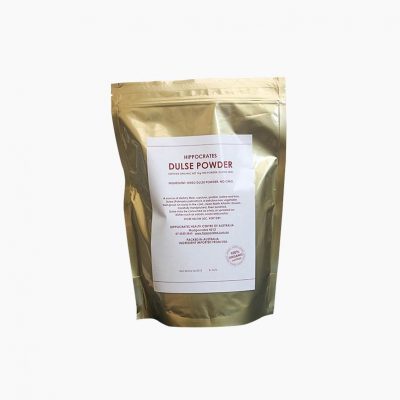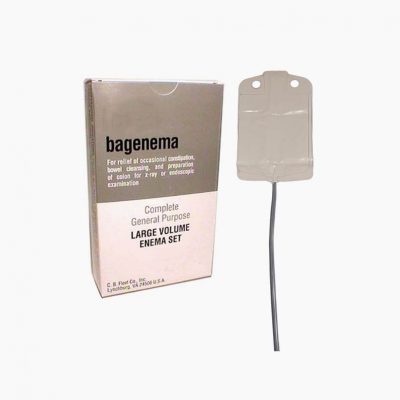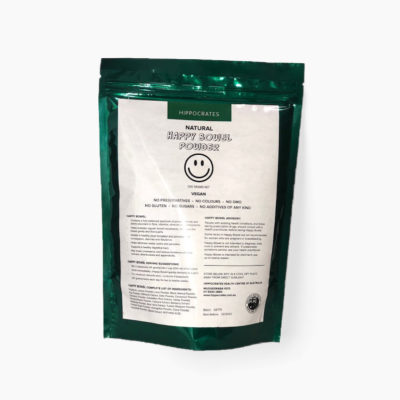Wheatgrass Juice is one of the best sources of living chlorophyll available.
Chlorophyll is the first product of light and contains more light energy than any other element.
Wheatgrass juice is a crude chlorophyll and can be taken orally and as a colon implant.
Chlorophyll is the basis of all plant life.
Wheatgrass is high in oxygen, as are all green plants that contain chlorophyll. The brain and all body tissues function at an optimal level in a highly-oxygenated environment.
Chlorophyll is anti-bacterial and can be used inside and outside the body as a healer.
Wheatgrass juice is digested within minutes.
Chlorophyll arrests growth and development of unfriendly bacteria.
Chlorophyll (wheatgrass) rebuilds the bloodstream. Studies of various animals have shown chlorophyll to be free of any toxic reaction. The red cell count was returned to normal within 4 to 5 days of the administration of chlorophyll, even in those animals which were known to be extremely anemic or low in red cell count.
Graziers with sterile cows and bulls have put them on wheatgrass to restore fertility. (The high magnesium content in chlorophyll builds enzymes that restore the sex hormones.)
Chlorophyll can be extracted from many plants, but wheatgrass is superior because it has been found to have over 100 elements needed by humans. If grown in organic soil, it absorbs 92 of the known 102 minerals from the soil.
Liquid chlorophyll penetrates the tissues and refines and renews them.
Liquid chlorophyll washes drug deposits from the body.
Chlorophyll neutralizes toxins in the body.
Chlorophyll helps purify the liver.
Chlorophyll improves blood sugar issues.
In the American Journal of Surgery (1940), Benjamin Gruskin, M.D. recommended chlorophyll for its antiseptic benefits. The article suggests the following clinical uses for chlorophyll: to clear up foul smelling odors, neutralize Strep infections, heal wounds, hasten skin grafting, cure chronic sinusitis, overcome chronic inner ear inflammation and infection, reduce varicose veins and heal leg ulcers, eliminate impetigo and other scabby eruptions, heal rectal sores, successfully treat inflammation of the uterine cervix, get rid of parasitic vaginal infections, reduce typhoid fever, and cure advanced pyorrhea.
Wheatgrass Juice alleviates acne and can even help to remove scars. (The diet must be improved at the same time.)
Wheatgrass juice acts as a detergent in the body and is used as a body deodorant.
A small amount of wheatgrass juice in the human diet helps prevents tooth decay.
Wheatgrass juice held in the mouth for 5 minutes will help eliminate toothaches. It pulls poisons from the gums.
Gargle wheatgrass juice to address sore throat.
Drink wheatgrass Juice for skin problems such as eczema or psoriasis.
Pyorrhea of the mouth: lay pulp of wheatgrass soaked in juice on diseased area in mouth or chew wheatgrass, spitting out the pulp.
Many wheatgrass juice users feel a difference in strength, endurance, health, and spirituality, and experience a sense of wellbeing.
Wheatgrass juice improves the digestion.
Wheatgrass juice is high in enzymes.
Wheatgrass juice is an excellent skin cleanser and can be absorbed through the skin for nutrition. Pour green juice over your body in a tub of warm water and soak for 15 to 20 minutes. Rinse off with cold water.
Wheatgrass implants (enemas) are great for healing and detoxifying the colon walls. The implants also heal and cleanse the internal organs. After an enema, wait 20 minutes, then implant 90ml of wheatgrass juice. Retain for 20 minutes.
Wheatgrass juice is great for constipation and keeping the bowels open. It is high in magnesium.
Wheatgrass juice can dissolve the scars that are formed in the lungs from breathing acid gasses. The effect of carbon monoxide is minimized, since chlorophyll increases hemoglobin production.
Wheatgrass juice reduces high blood pressure and enhances the capillaries.
Wheatgrass juice can remove heavy metals from the body.
Wheatgrass juice is great for blood disorders of all kinds
Organic Wheatgrass Powder is available.
Medical References
- Hughes and Letner. “Chlorophyll and Hemoglobin Regeneration,” American Journal of Medical Science, 188, 206 (1936)
- Patek. “Chlorophyll and Regeneration of Blood,” Archives of Internal Medicine. 57, 76 (1936)
- Kohler, Elvahjem and Hart. “Growth Stimulating Properties of Grass Juice,” Science. 83, 445 (1936)
- Kohler, Elvahjem and Hart. “The Relation of the Grass Juice Factor to Guinea Pig Nutrition.” Journal of Nutrition, 15, 445 (1938)
- Rhoads. “The Relation of Vitamin K to the Hemorrhagic Tendency in Obstructive Jaundice (Dehydrated Cereal Grass as the Source of Vitamin K). Journal of Medicine, 112, 2259, (1939)
- Waddall. “Effect of Vitamin K on the Clotting Time of the Prothrombin and the Blood (Dehydrated Cereal Grass as the Source of Vitamin K).” Journal of Medicine. 112, 2259 (1939)
- Illingworth. “Hemmorrhage in Jaundice (Use of Dehydrated Cereal Grass).” Lancet. 236. 1031 (1939)
- Kohler, Randle and Wagner. “The Grass Juice Factor.” Journal of Biological Chemistry. 128, 1w (1939)
- Friedman and Friedman. “Gonadotropic Extracts from Green Leaves.” American Journal of Physiology. 125, 486, (1939)
- Randle, Sober and Kohler. “The Distribution of the Grass Juice Factor in Plant and Animal Materials.” The Journal of Nutrition. 20, 459 (1940)
- Gomez, Hartman and Dryden. “Influence of Oat Juice Extract Upon the Age of Sexual Maturity in Rats. The Journal of Dairy Science. 24, 507 (1941)
- Miller. “Chlorophyll for Healing.” Science News Letter. March 15, 17l (1941)
- Gomez. “Further Evidence of the Existence and Specificiey of an Orally Active Sex Maturity Factor (s) in Plant Juice Preparations.” The Journal of Dairy Science. 25, 705 (1942)
- Kohler. “The Effect of Stage of Growth on the Chemistry of the Grasses.” The Journal of Biological Chemistry. 215-23 (1944)
- Boehme. “The Treatment of Chronic Leg Ulcers with Special Reference to Ointment Containing Water Soluble Chlorophyll.” Cahey Clinical Bulletin. 4, 242 (1946)
- Bowers. “Chlorophyll in Wound Healing and Suppurative Disease.” The American Journal of Surgery. 71, 37 (1947)
- Colio and Babb. “Study of a New Stimulatory Growth Factor,” Journal of Biological Chemistry, 174, 405 (1948)
- Juul-Moller and Middelsen. “Treatment of Intestinal Disease with Solutions of Water Soluble Chlorophyll.” The Review of Gastroenterology. 15, 549 (1948)
- Carpenter. “Clinical Experiences with Chlorophyll Preparations with Particular Reference to Chronic Osteomyelitis and Chronic Ulcer.” American Journal of Surgery. 77, 267 (1949)
- Offenkrantz. “Water-Soluble Chlorophyll in Ulcers of Long Duration.” Review of Gastroenterology, 17, 359-67 (1950)
- Anselmi. “Clinical Use of Chlorophyll and Derivatives.” (??H or M) Minerva Medica. 2, 1313-14 (1950)
- Lam and Brush. “Chlorophyll and Wound Healing: Experimental and Clinical Sudy,” American Journal of Surgery. 80, 204-20 (1950)
- Granick. “Structural and Functional Relationships between Heme and Chlorophyll.” The Harvey Lectures. (1943-l949)
- Cheney. “Antipeptic Ulcer Dietary Factor.” The Journal of the American Dietetic Association. 26, 668 (1950)
- Cheney. “The Nature of the Antipeptic Ulcer Factor.” Stanford Medical Bulletin, 8, 144 (1950)
- Sonsky. “Vitamin K Influence of Preventative Prenatal Administration,” Ceskolovenska Gyneakologia, 29, 197 (1950)
- Mossberg. “Vitamin K Treatment of Acute Hepatitus.” British Medical Journal. 1, 1382-84 (1961)
- Reid. “Treatment of Hypoprothrombinemia with Orally Administered Vitamin K.” Quarterly Bulletin: Northwestern University Medical School. 25. 292-95 (1951)
- Dohan, Richardson, Stribley and Gyorgy. “The Estrogenic Effects of Extracts of Spring Rye Grass.” Journal of the American Veterinary Medicine Association. 118, 323 (1951)
- Kohler and Graham. “A Chick Growth Factor Found in Leafy Green Vegetation,” Poultry Science. 30, 484 ((1951)
- Paloscia and Pallotta. “Chlorophyll in Therapy.” Lotta Controlla Tubercolosi, 22, 738-40 (1952)
- Shattan and Kutcher. “Effect of Chlorophyll on Postextraction Healing.” Journal of Oral Surgery. 46, 324 (1952)
- Kutcher and Chilton. “Clinical Use of Chlorophyll Dentifrice.” Journal of the American Dental Association. 46, 420-22 (1953)
- Kohler. “The Unidentified Vitamins of Grass and Alfalfa.” Feedstuffs Magazine. August 8 (1953).
- Dunham. “Differential Inhibition of Virus Hemagglutination by Clorophyllin.” Proceedings of the Society for Experimental Biology and Medicine. 87, 431-33 (1954)
- Gandolfi. “Repitelizing Potency Exerted on Cornea by Chlorophyll.” Annali de Ottalmologiale Clinica Oculistica. 80, 131-42 (1954)
- Borelli. “Chlorophyll (for Acne Therapy). Der Hautarzt. 6, 120-24 (1955)
- Gandolfo. “Antismotic Activity of Chlorophyllin.” Rendiconti Instituto Superiore de Sanita. 18, 641-48 (1955)
- Offenkrantz. “Complete Healing (Peptic Ulcer) with Water-Soluble Chlorophyll.” American Journal of Gastroenterology. 24, 182-85 (1955)
- Wennig. Modification and Inhibition of Resorption of Urinary Substances with Chlorophyllin,” Wiener Medizinishe Wochenschrift. 105, 885-87 (1955)
- Ammon and Wolfe. “Does Chloro;hyll have Bactericidal and Bacteriostatic Activity?” Arzneimettel-Forschung. 5, 312-14 (1955)
- Bertram and Weinstock. “A Clinical Evaluation of Chlorophyll, Benzocain and Urea Ointment in Treatment of Minor Infections of the Foot.” Journal of the American Podiatry Association. 19, 366 (1959)
- The Scandanavian Journal of Gastroenterology, Volume 37, Number 4/April 1, 2002, pages 444-449 talks of a study titled: “Wheat Grass Juice in the Treatment of Active Distal Ulcerative Colitis: A Randomized Double-blind Placebo-controlled Trial.” Conclusion: “Wheat grass juice appeared effective and safe as a single or adjuvant treatment of distal UC.”





